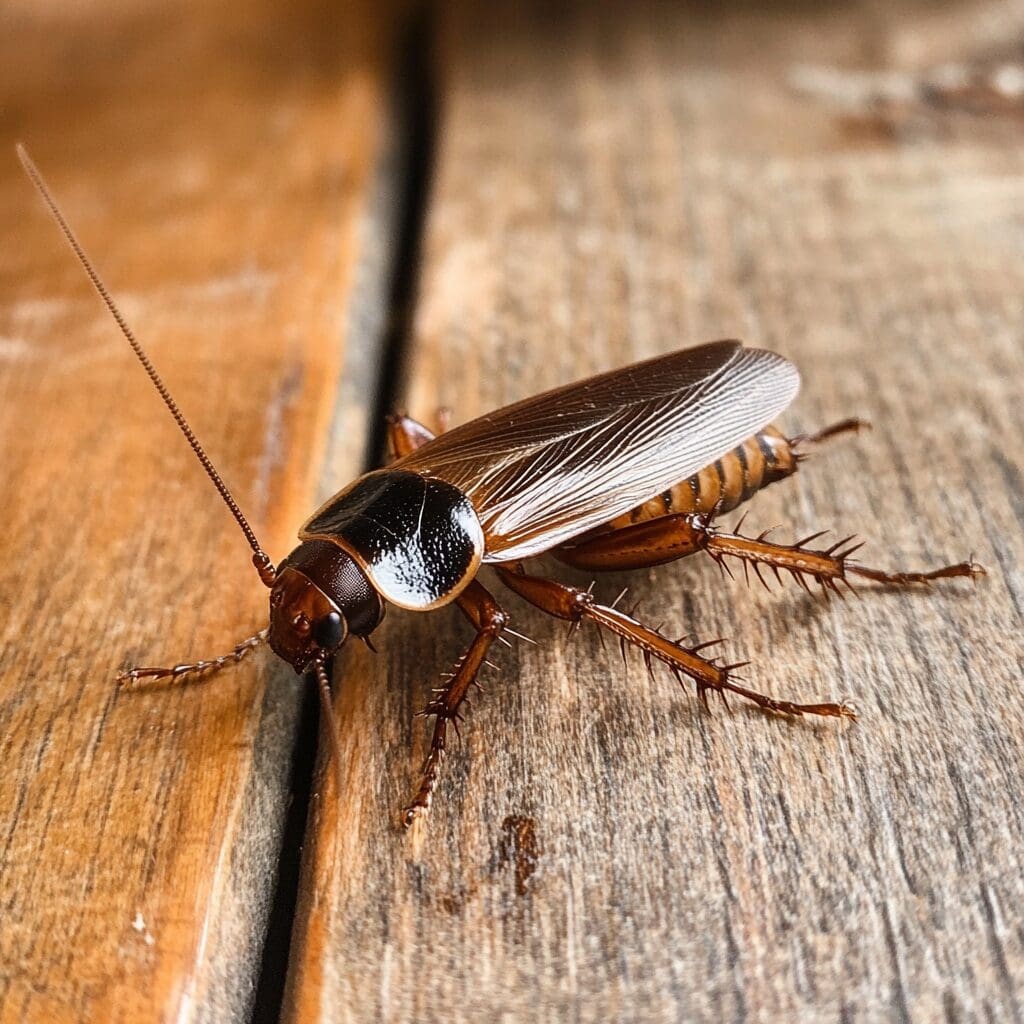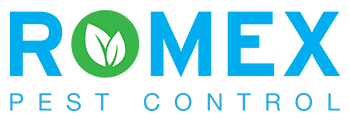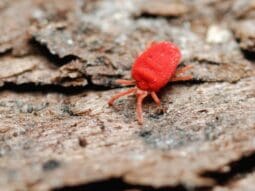
German cockroaches are one of the most common household pests, notorious for their resilience and rapid reproduction. As expert exterminators, we've encountered countless questions from concerned homeowners about these pesky intruders. In this article, we'll address the most frequently asked questions about German cockroaches to help you better understand and combat these unwelcome guests.
From identifying German cockroaches to implementing effective prevention strategies, we'll cover everything you need to know. We'll also explore their habits, preferred habitats, and the potential health risks they pose. By the end of this guide, you'll be equipped with the knowledge to tackle your German cockroach problem head-on and keep your home pest-free.
What Are German Cockroaches?
German cockroaches are small, light brown to tan insects with two distinct dark stripes running from their head to their wings. These pests are notorious for their ability to thrive in human environments and reproduce rapidly.
Physical Characteristics
German cockroaches measure 1/2 to 5/8 inches in length, making them one of the smaller cockroach species. Their oval-shaped bodies are flat, allowing them to squeeze into tight spaces. Key identifying features include:
- Two parallel dark stripes on the pronotum (area behind the head)
- Six legs with spines
- Long antennae
- Wings present but rarely used for flying
- Nymphs (immature cockroaches) are darker in color and lack wings
Habitat Preferences
German cockroaches are indoor pests, rarely found living outside. They prefer warm, humid environments with easy access to food and water. Common habitats include:
- Kitchens and bathrooms
- Behind refrigerators and stoves
- Inside cabinets and drawers
- Near plumbing fixtures and drains
- Cracks and crevices in walls or floors
- Electronic devices (TVs, computers, microwaves)
These roaches are often introduced to new areas through infested items, such as grocery bags, used appliances, or furniture. Once established, they quickly spread throughout a building, hiding in dark, secluded areas during the day and emerging at night to forage for food.
Identifying a German Cockroach Infestation
Identifying a German cockroach infestation early is crucial for effective control. We'll explore common signs and high-risk areas to help you detect these pests in your home.
Common Signs
German cockroach infestations often reveal themselves through several telltale signs:
- Live cockroaches: Spotting live roaches, especially during the day, indicates a severe infestation
- Droppings: Small, dark, pepper-like feces in kitchen cabinets, drawers, and corners
- Egg cases: Light brown, oval-shaped capsules about 1/4 inch long
- Musty odor: A distinctive, unpleasant smell in heavily infested areas
- Smear marks: Dark, irregular streaks on surfaces where roaches frequently travel
High-Risk Areas in Homes
German cockroaches prefer warm, humid environments with access to food and water. High-risk areas include:
- Kitchens: Behind refrigerators, stoves, and dishwashers
- Bathrooms: Under sinks, behind toilets, and in cabinet voids
- Laundry rooms: Around washing machines and dryers
- Electronics: Inside televisions, computers, and gaming consoles
- Cluttered areas: Cardboard boxes, stacks of newspapers, and piles of clothing
- Food storage areas: Pantries, cupboards, and pet food containers
Regular inspections of these areas help detect infestations early, allowing for prompt intervention and more effective control measures.
Life Cycle and Reproduction
German cockroaches have a rapid life cycle and high reproduction rate, contributing to their reputation as persistent pests. Understanding these aspects is crucial for effective control and management.
Growth Stages
German cockroaches progress through three distinct stages: egg, nymph, and adult. The egg stage lasts about 28 days, with females producing oothecae containing 30-40 eggs each. Nymphs emerge from these eggs and undergo 6-7 molts over 6-8 weeks before reaching adulthood. Adult German cockroaches live for 100-200 days, continuing the reproductive cycle. During each stage, these pests require specific environmental conditions, including warmth, moisture, and food sources, to thrive and develop.
Reproduction Rate
German cockroaches reproduce at an alarming rate, contributing to rapid population growth. A single female can produce up to 8 oothecae in her lifetime, potentially resulting in 300-400 offspring. Under ideal conditions, German cockroach populations can double every 2-3 months. This high reproduction rate, combined with their short life cycle, allows these pests to quickly establish large infestations in favorable environments. Factors such as temperature, humidity, and food availability directly influence their reproduction speed, making effective control measures essential for preventing widespread infestations.
Diet and Behavior
German cockroaches are omnivorous scavengers with diverse feeding habits and distinct activity patterns. Their diet and behavior play crucial roles in their survival and infestation patterns.
Preferred Food Sources
German cockroaches have a varied diet, consuming a wide range of organic materials. They prefer:
- Starchy foods: Bread, cereals, and pasta
- Sugary substances: Sweets, syrups, and fruit juices
- Protein-rich items: Meats, cheese, and pet food
- Grease and oils: Food residues on cooking surfaces and utensils
- Paper products: Glue on book bindings and wallpaper paste
These pests are also known to feed on:
- Crumbs and food debris
- Garbage and decaying organic matter
- Human hair and dead skin cells
- Soap residues and toothpaste
German cockroaches can survive on minimal food sources, making them highly adaptable to various environments.
Activity Patterns
German cockroaches exhibit nocturnal behavior, with peak activity occurring during nighttime hours. Their activity patterns include:
- Emerging from hiding spots after dark
- Foraging for food and water in kitchens and bathrooms
- Retreating to dark, warm crevices during daylight hours
- Increased activity in quiet, undisturbed areas
Factors influencing their activity:
- Light levels: They avoid bright light and prefer dimly lit or dark spaces
- Temperature: Optimal activity occurs between 70°F and 80°F (21°C to 27°C)
- Humidity: They thrive in humid environments with relative humidity above 60%
- Food availability: Activity increases in areas with abundant food sources
- Population density: Overcrowding can lead to daytime activity in severe infestations
Understanding these activity patterns is essential for effective pest control strategies and minimizing encounters with these persistent pests.
Health Risks Associated with German Cockroaches
German cockroaches pose significant health risks to humans due to their ability to spread diseases and trigger allergic reactions. These pests are more than just a nuisance; they're a serious threat to public health and hygiene.
Disease Transmission
German cockroaches are efficient vectors for various pathogens. They carry bacteria, viruses, and parasites on their bodies and in their droppings, which can contaminate food and surfaces. These pests transmit diseases such as salmonella, E. coli, and typhoid fever. Cockroaches pick up pathogens from unsanitary areas like sewers and garbage, then transfer them to clean surfaces in homes and buildings. Their habit of regurgitating partially digested food and defecating while feeding further increases the risk of disease spread.
Allergic Reactions
Cockroach allergens are potent triggers for allergies and asthma, especially in urban environments. These allergens are found in cockroach saliva, feces, and shed body parts. Exposure to these allergens can cause:
- Asthma attacks
- Nasal congestion
- Skin rashes
- Eye irritation
- Wheezing
Children are particularly susceptible to cockroach-induced allergies, with studies showing a strong link between cockroach exposure and increased asthma severity in urban youth. Even in the absence of live cockroaches, their allergens can persist in the environment for months, continuing to cause health issues.
Prevention and Control Methods
Effective prevention and control of German cockroaches require a multi-faceted approach. We'll explore key strategies to keep these pests at bay and manage existing infestations.
Sanitation Practices
Sanitation is crucial in preventing German cockroach infestations. Clean kitchens daily, wiping down counters and appliances to remove food residues. Store food in airtight containers and dispose of garbage in sealed bins. Regularly vacuum floors and furniture, paying special attention to cracks and crevices. Eliminate standing water sources, such as leaky pipes or condensation, as cockroaches need moisture to survive. Declutter living spaces to reduce potential hiding spots for these pests.
Sealing Entry Points
German cockroaches enter homes through small openings. Inspect exterior walls, foundations, and utility entry points for cracks or gaps. Seal these openings with caulk or appropriate materials to prevent cockroach entry. Install weatherstripping on doors and windows to close potential access routes. Use fine mesh screens on vents and drains to block cockroach entry while maintaining proper ventilation. Regularly check and maintain these seals to ensure long-term effectiveness in cockroach prevention.
Professional Treatment Options
Professional pest control services offer comprehensive solutions for German cockroach infestations. These experts employ targeted strategies to eliminate existing populations and prevent future invasions.
Integrated Pest Management Approaches
Integrated Pest Management (IPM) combines multiple techniques to control German cockroaches effectively. This approach includes:
- Thorough inspection to identify infestation sources
- Targeted application of insecticides in high-risk areas
- Implementation of physical barriers and exclusion methods
- Regular monitoring and follow-up treatments
- Education on prevention strategies for property owners
IPM minimizes pesticide use while maximizing cockroach control, making it an environmentally friendly and sustainable option.
Chemical vs. Non-Chemical Solutions
Pest control professionals use a combination of chemical and non-chemical solutions to address German cockroach infestations:
Chemical Solutions:
- Liquid residual insecticides for crack and crevice treatments
- Insecticide baits in gel or station form
- Insecticide dusts for void treatments
Non-Chemical Solutions:
- Vacuum removal of visible cockroaches and egg cases
- Steam treatments for heat-sensitive areas
- Sticky traps for monitoring and population reduction
- Diatomaceous earth as a natural desiccant
Professionals select the most appropriate combination of treatments based on the severity of the infestation, property layout, and client preferences. This tailored approach ensures optimal results while minimizing risks to humans and pets.
Long-Term Management Strategies
Effective long-term management of German cockroaches requires a comprehensive approach that combines monitoring techniques and preventive measures. We'll explore strategies to keep these persistent pests at bay and maintain a cockroach-free environment.
Monitoring Techniques
Monitoring is crucial for early detection and prevention of German cockroach infestations. We use sticky traps placed strategically in high-risk areas such as kitchens, bathrooms, and utility rooms. These traps not only capture cockroaches but also indicate the severity and location of infestations. Regular visual inspections, focusing on cracks, crevices, and dark corners, complement trap monitoring. Advanced monitoring methods include using pheromone-based attractants and electronic devices that detect cockroach movement and heat signatures.
Preventing Re-infestation
To prevent German cockroach re-infestations, we implement a multi-faceted approach:
- Maintain cleanliness: Regular cleaning of floors, countertops, and appliances eliminates food sources.
- Seal entry points: Use caulk to close gaps in walls, floors, and around pipes.
- Reduce moisture: Fix leaks and use dehumidifiers in damp areas.
- Proper food storage: Store food in airtight containers and dispose of garbage regularly.
- Declutter: Remove cardboard boxes and unnecessary items that provide hiding spots.
- Regular inspections: Conduct monthly checks for signs of cockroach activity.
- Ongoing treatments: Apply residual insecticides or baits as needed, following professional recommendations.
- Education: Train household members or employees on cockroach prevention practices.
By combining these monitoring techniques and preventive measures, we create an environment that's inhospitable to German cockroaches, significantly reducing the risk of re-infestation.
Romex Pest Control: German Cockroach Solutions
At Romex Pest Control, we're experts in German cockroach eradication. Our comprehensive approach combines advanced techniques and eco-friendly products to effectively eliminate these persistent pests.
Professional Inspection and Assessment
We conduct thorough inspections to identify infestation sources, harborage areas, and entry points. Our trained technicians use specialized tools to detect hidden cockroach populations, ensuring a complete assessment of the problem.
Customized Treatment Plans
Based on our inspection findings, we develop tailored treatment plans. These plans incorporate:
- Targeted insecticide applications
- Baiting systems
- Growth regulators
- Exclusion methods
Our solutions address both active infestations and prevent future problems.
Integrated Pest Management (IPM) Approach
We suggest IPM strategies to manage German cockroach infestations sustainably. This includes:
- Habitat modification
- Sanitation improvements
- Moisture control
- Client education on prevention
Our IPM suggestions minimize pesticide use while maximizing long-term effectiveness.
Advanced Treatment Technologies
Ask your Romex technician about cutting-edge technologies for German cockroach control:
- Gel baits with advanced attractants
- Dust formulations for hard-to-reach areas
- Precision spray applications
- Non-toxic monitoring systems
These technologies ensure comprehensive coverage and lasting results.
Follow-up and Maintenance
We provide ongoing support to maintain a cockroach-free environment:
- Regular follow-up inspections
- Retreatments as needed
- Continuous monitoring
- Preventive maintenance plans
Our commitment extends beyond initial treatment to ensure lasting protection.
Conclusion
German cockroaches pose significant challenges but they're not unbeatable. With the right knowledge and strategies we've outlined you can effectively manage and prevent infestations. Remember early detection and consistent preventive measures are key. For stubborn or severe cases don't hesitate to seek professional help. We at Romex Pest Control are here to provide expert assistance tailored to your specific situation. By staying vigilant and implementing these strategies you'll be well-equipped to keep your home or business cockroach-free.
We hope you enjoy these informational articles. If you'd like to learn more about our eco-friendly pest control services, call (844) 955-2447.
Read More
Your Path to a Pest-Free Home or Business
Romex Pest Control
We are committed to protecting you, your children, and your pets with our eco-friendly, child-friendly, and pet-friendly guaranteed pest control solutions.
Romex Pest Control is fully insured and licensed in Texas, Oklahoma, Louisiana, and Mississippi.
Service Areas:
Hours
M-F 8 am–5 pm
Sat 8 am–2 pm
Sun Closed
Established 2016 © Copyright 2025 Romex Pest Control










